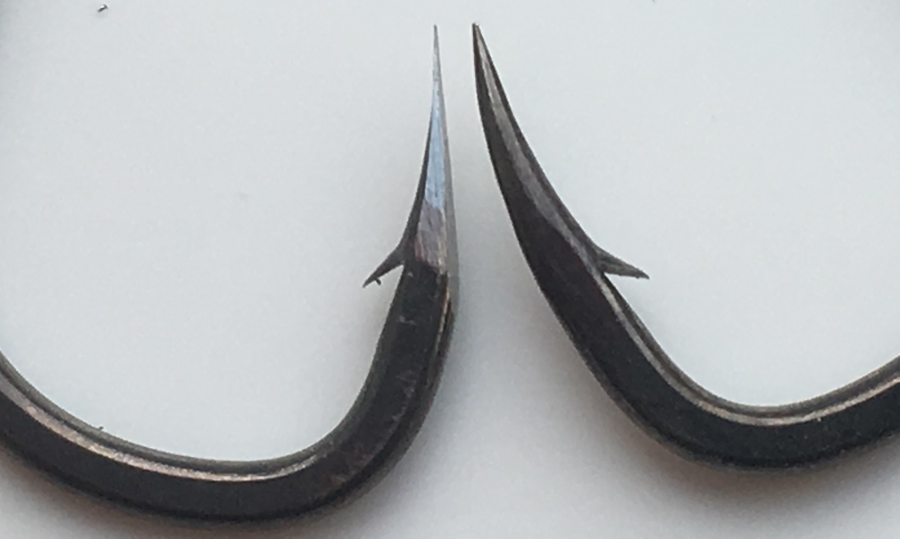Setting the hook is important when trying to catch a fish. Some anglers prefer to say that they need to “Rip their lips, Yank and Crank, Set the Hook,” Whatever your term is, here are some techniques and thoughts about Setting the Hook!
The angler’s goal is to have Screaming Reels and Tight Lines! All of this is made possible then the terminal end hook becomes embedded into the fish’s mouth.
Hooking a fish doesn’t hurt the fish. Most sharp hooks penetrate the mouth’s cartilage, which is like bone, and has no nerves. It is like hooking a fingernail. They may feel resistance and pressure but not pain.
Gut hooked or deep hooked fish will feel pain. Nerves are found in the meatier skin and organs. If blood is flowing, damage to the fish has occurred and the fish will probably die. Most of these wounds result from using bait or engulfed flies and lures. If a deep hooked fish is to released, cut the line and let the fish have it, before digging into their guts. The hook will dissolve in a few days.
Most people fail to understand when or how to set the hook.
A sharp hook sets and comes out easier. I am amazed at how few anglers do not sharpen hooks. Hooks can have glue on them, be rusted, or are just dull. Even new hooks out of the pack can be mis-shapened or damaged/dull. Get a hook sharpener.
Check your hooks. One of my buddies set the hook during a caddis hatch over 20 times without catching a fish. I told him to check to see if the hook was intact. The perfect caddis tie had no point on the end.
Set the Drag! If the drag is too tight or loose, you will either lose energy during the set or not have enough.
Use line/tackle that you are comfortable with. Line that is lighter sets faster than heavier line. Select a line /tippet that you are comfortable using without breaking or missing strikes.
Setting is about sweeping the rod, not jerking it. Snapping a set will also snap off your lure or fly. Sweeping the set with a longer rod invites the rod to absorb and even out the shock of the set.
Check your knots Lousy knots will always fail on the best and biggest fish and hook sets.
Finish the set. Anticipate that you will hook a fish. Don’t be a wussy! Set the hook like you mean to catch a fish. Don’t stop at mid-set. Follow through.
Let the rod do the work. Rods bend to absorb shock and handle/tire big fish. Playing a big fish on a flexy rod tires them out faster and makes for longer casts. Keep the rod bent and under tension after the set.
Time your set. Wait for the set to be most effective. Cutthroat trout take forever to take a dry fly. Wait until the lure, fly, or bait is in the fish’s mouth. Crank in the slack line before setting the hook.
Setting the hook is just one part of catching a fish. A proper cast in a proper place, at a proper time, with the proper bait/fly/lure will get you to the point where you get to set the hook. Playing with the fish correctly, netting properly, and having your gear perform properly are also important. Not one thing about fishing is more or less important than another. You need to learn it all, to be all the fisherman, you can be! That’s one of the things that is great about fishing. You will never master it and never get enough bites, sets, and limits of fish or time on the water.
Hook a Big One!
Montana Grant





